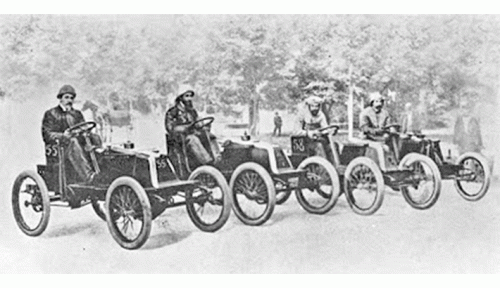Thursday 13th June 1895
The Paris–Bordeaux–Paris Trial of June 1895, sometimes called the “first motor race” although it did not conform to modern convention whereby the fastest finisher is the winner, ended.
The Comte Albert de Dion led a group of organizers for a motor race between Paris and Bordeaux before returning to Paris, a distance of 732 miles. Regulations for the event stipulated a pure race where the winner was the first car home, seating more than two passengers. Drivers could be changed during the race and repairs were allowed only with materials carried on the car, supervised by “Commissaires”. Manufacturers were prohibited to enter several identical cars so as not to “swamp” the smaller amongst them but were allowed an unlimited number of cars if they were deemed sufficiently different.
Twenty-three vehicles took of from Versailles, amongst this group were steamers from de Dion, Serpollet and Bollées and petrol cars from Benz, Peugeot, Panhard et Levassor and an electric car from the famous carriage maker Jeantaud. The face was a triumph for Émile Levassor who arrived first after completing the 1,178 km in 48 hours, nearly six hours ahead of the runner-up and at a stout average speed of 15 miles per hour. However, the official winner was Paul Koechlin, who arrived third in his Peugeot, exactly 11 hours slower than Levassor, but officially the race had been for four-seater cars, whereas Levassor and the runner-up drove two-seater cars. However as witnessed by the statue later erected at Porte Maillot in his honor it was Levassor who gained glory from the crowd.
Nine out of twenty-three cars finished the race, eight of them petrol. The sole steamer was the Bollée which was built in 1880 and carried seven passengers. One car that finished, but outside of the 100 hour window was entered by the Michelin brothers and had pneumatic tires. The car they were driving was called the Lightning, not because of its speed but rather due to an issue with it’s steering mechanism its trajectory followed the zigzag outline of a lightning bolt.






